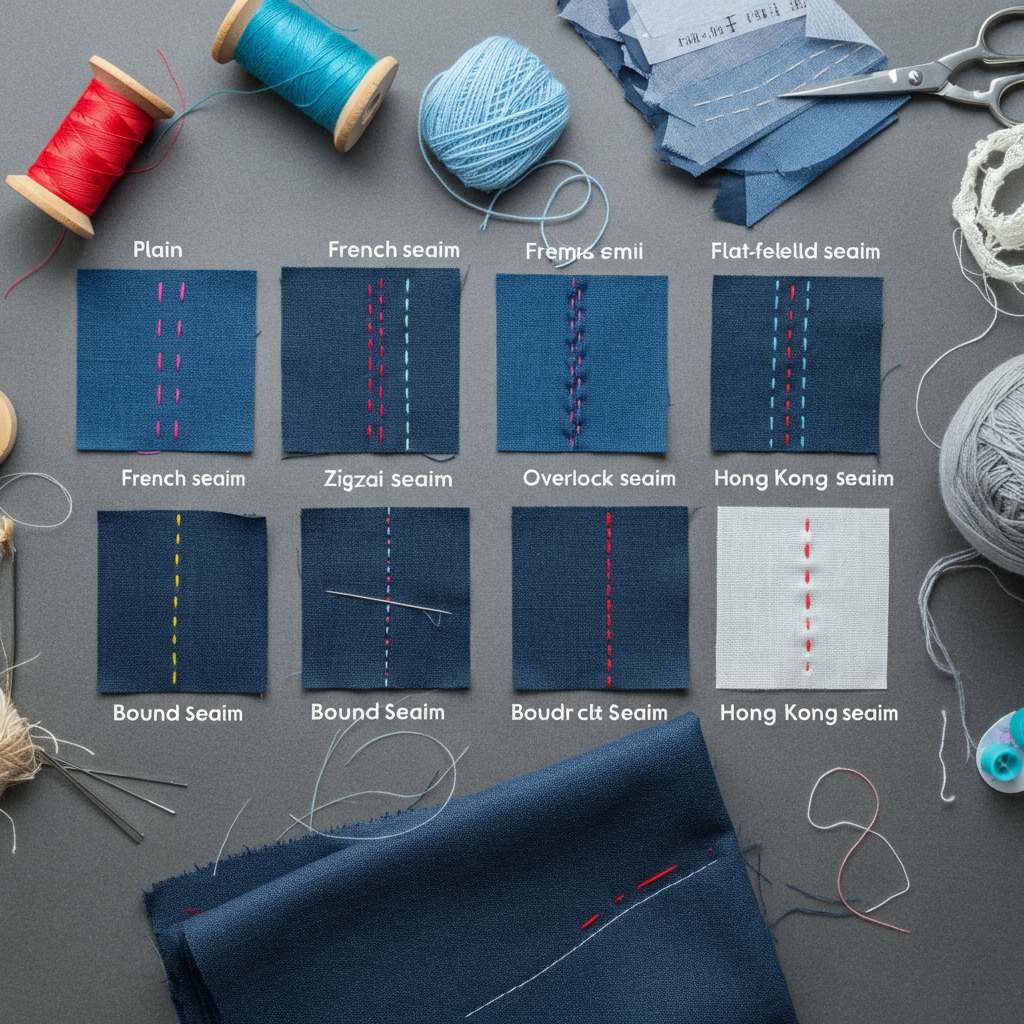Sewing is both an art and a craft that involves joining fabric pieces to create clothing, accessories, and home décor. One of the fundamental aspects of sewing is understanding the various Nahttypen (seam types), each serving different purposes and offering unique benefits in garment construction. Mastering these seam types allows sewists and designers to produce durable, flexible, and aesthetically pleasing finished products.
In this comprehensive overview, we’ll explore the most common seam types, their functions, advantages, and ideal applications.
1. Geradnaht (Plain Seam)
The Geradnaht is the most basic and commonly used seam. It involves sewing two fabric edges together with a straight stitch, usually with a seam allowance of about 1-1.5 cm.
- Uses: General sewing, joining fabric pieces, constructing garments.
- Advantages: Easy to sew, versatile, provides a clean finish.
-
Tip: To achieve a tidy and professional finish, press the seam allowances either open or to one side after sewing.
2. French Seam
A French seam encloses the raw edges within the seam, resulting in a very neat and professional finish, especially suitable for delicate or lightweight fabrics.
-
Construction: Begin by sewing the fabric pieces with wrong sides together using a narrow seam allowance. Trim the seam allowances to reduce bulk. Then, fold the edges to encase the raw edges, press them flat, and sew with right sides together to create a clean, finished seam.
clean, durable finish.
- Uses: Sheer fabrics, lingerie, high-end garments.
- Advantages: No raw edges visible, prevents fraying, elegant finish.
3. Flat-felled Seam (Kappnaht)
This seam is highly robust and long-lasting, making it a popular choice for denim jeans and heavy-duty work garments.
-
Construction: Sew the fabric edges together, then trim one of the seam allowances to reduce bulk. Fold the remaining seam allowance over the trimmed edge, press it flat, and topstitch to secure, ensuring the raw edges are fully enclosed for a clean and durable finish.
- Uses: Jeans, workwear, outdoor gear.
- Advantages: Extremely sturdy, prevents fraying, offers a clean, flat finish.
4. Zickzack-Naht (Zigzag Seam)
A zigzag stitch can be used as a seam or to finish raw edges to prevent fraying.
- Uses: Finishing raw edges, stretch fabrics.
- Advantages: Flexibility, prevents fraying, suitable for stretchy fabrics.
- Tip: Use a zigzag stitch for seam allowances on knit fabrics to add stretch.
5. Overlock/Serger Seam
Using a serger (overlock machine), this seam trims the fabric edges and encloses them in a thread overcast, creating a professional finish.
- Uses: Seams on knit fabrics, finishing raw edges.
- Advantages: Fast, durable, professional appearance, prevents fraying.
6. Bound Seam (Eingesäumte Naht)
This involves sewing the seam and then encasing it with bias tape or binding.
- Uses: Seam finishes in linings or lightweight fabrics.
- Advantages: Clean finish, adds strength, decorative potential.
7. Hong Kong Seam
A variation of bound seams, where raw edges are enclosed with a strip of fabric or bias tape, is often used in tailored garments to provide a clean and professional finish.
- Uses: Jackets, coats, high-end garments.
- Advantages: Neat, durable, hides raw edges.
8. Felled Seam (Kappnaht)
Similar to the flat-felled seam but often used in quilting and heavy-duty sewing, it joins fabric edges tightly together.
Choosing the Right Seam Type
Selecting the appropriate Nahttyp depends on fabric type, garment purpose, and desired finish:
- For delicate fabrics, prefer French seams.
-
For heavy or durable garments, flat-felled seams are ideal because they provide strong, sturdy, and neatly finished seams that can withstand wear and tear.
- For stretchy fabrics, zigzag or overlock seams work best.
- For professional-appearing interiors, bound or Hong Kong seams are excellent.
Conclusion
Understanding the different Nahttypen is essential for achieving optimal results in sewing projects. Each seam type offers specific advantages that can enhance the durability, appearance, and functionality of your creations. Experimenting with various seam types will expand your skills and help you produce professional-quality garments and items.
Happy sewing!


